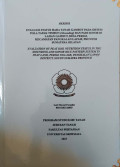
EVALUASI STATUS HARA TANAH GAMBUT PADA SISTEM POLA TAPAK TIMBUN (Mounding) DA…
Indonesia's peatlands cover approximately 24.67 million hectares, storing large carbon reserves but having low fertility and acidic properties. In Perigi Village, two rice cultivation methods are a…
- Edition
- -
- ISBN/ISSN
- -
- Collation
- xv, 78 hlm.; ilus.; tab.; 29 cm.
- Series Title
- -
- Call Number
- T1854012025

STUDI TATA AIR MIKRO DAN KESUBURAN TANAH UNTUK MENINGKATKAN PRODUKTIVITAS TAN…
Swamp lands in Indonesia play a very important and strategic role in agricultural development, especially in light of rapid population and industrial growth, as well as the reduction of fertile lan…
- Edition
- -
- ISBN/ISSN
- -
- Collation
- ix, 68 hlm.; ilus.; tab, 29 cm.
- Series Title
- -
- Call Number
- T1543202024
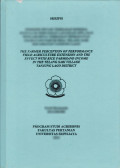
KARAKTERISTIK BEBERAPA SIFAT FISIK DAN KIMIA TANAH PADA LAHAN PASANG SURUT DE…
Indonesia memiliki lahan rawa yang luasnya kurang lebih mencapai 33 juta hektar, yang terdiri dari rawa pasang surut dan rawa non pasang surut atau lebih dikenal dengan istilah rawa lebak, luas lah…
- Edition
- -
- ISBN/ISSN
- -
- Collation
- xi, 18 hlm.; ilus.; tab, 29 cm.
- Series Title
- -
- Call Number
- T1539302024
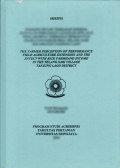
KAJIAN SIFAT KIMIA TANAH DI LAHAN RAWA PASANG SURUT PASCA BANJIR UNTUK PERTUM…
The condition of tidal land which has the potential to be a medium for plant growth is still an obstacle in the process of developing and producing plant activities. This is due to the existence of…
- Edition
- -
- ISBN/ISSN
- -
- Collation
- ix, 86 hlm.; ilus.; 29 cm
- Series Title
- -
- Call Number
- T1597382024
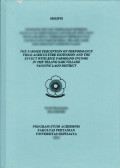
EVALUASI STATUS HARA N, P, K, DAN Mg SERTA PENYUSUNAN REKOMENDASI PEMUPUKAN U…
Land with rubber commodities that are old and entering a less productive phase need to be replanted. In this condition, the land will be converted into oil palm commodities. Therefore, before repla…
- Edition
- -
- ISBN/ISSN
- -
- Collation
- xiii, ilus.; tab, 29 cm.
- Series Title
- -
- Call Number
- T1463482024
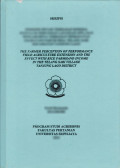
EVALUASI KESESUAIAN LAHAN UNTUK TANAMAN TEBU (Saccharum officinarum L.) PADA …
Sugarcane (Saccharum Officinarum L.) has long been one of the known and cultivated crops in Indonesia, sugarcane is also an important commodity to be used as the main ingredient for sugar productio…
- Edition
- -
- ISBN/ISSN
- -
- Collation
- ix, 39 hlm.; ilus.; tab, 29 cm.
- Series Title
- -
- Call Number
- T1533352024

KANDUNGAN HARA NITROGEN DI LAHAN RAWA PASANG SURUT PADA TANAMAN PADI (Oryza S…
Lahan rawa pasang surut merupakan salah satu lahan marginal yang memiliki potensi untuk dikembangkan sebagai areal pertanian, terutama dalam mendukung ketahanan pangan nasional. Namun, ketersediaan…
- Edition
- -
- ISBN/ISSN
- -
- Collation
- ix, 36 hlm.; ilus.; tab.; 29 cm
- Series Title
- -
- Call Number
- T1832922025
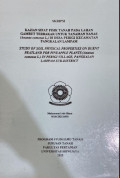
KAJIAN SIFAT FISIK TANAH PADA LAHAN GAMBUT TERBAKAR UNTUK TANAMAN NANAS (Anan…
Natural or intact peatlands are important carbon stores because they can sequester large amounts of carbon. An estimated 500-700 Gt of organic carbon globally is stored in peatlands. The physical c…
- Edition
- -
- ISBN/ISSN
- -
- Collation
- ix, 36 hlm.; ilus.; tab.; 29 cm
- Series Title
- -
- Call Number
- T1839012025
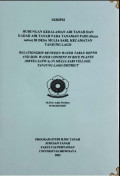
HUBUNGAN KEDALAMAN AIR TANAH DAN KADAR AIR TANAH PADA TANAMAN PADI (Orzya sat…
This research aims to analyze the relationship between water table depth and soil water content in tidal lowlands rice fields (Oryza sativa) located in Mulia Sari Village, Tanjung Lago District, Ba…
- Edition
- -
- ISBN/ISSN
- -
- Collation
- ix,36 hlm.; ilus.; tab.; 29 cm
- Series Title
- -
- Call Number
- T1832342025
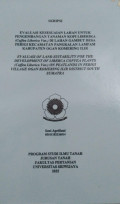
EVALUASI KESESUAIAN LAHAN UNTUK PENGEMBANGAN TANAMAN KOPI LIBERIKA (Coffea Li…
Indonesia is the fourth largest coffee producer and consumer in the world. Liberica coffee is known as a typical peat coffee because it has the ability to adapt well to peat soil compared to other …
- Edition
- -
- ISBN/ISSN
- -
- Collation
- xv, 45 hlm.; ilus,; tab, 29 cm
- Series Title
- -
- Call Number
- T1825332025
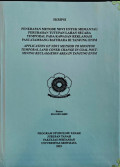
PENERAPAN METODE NDVI UNTUK MEMANTAU PERUBAHAN TUTUPAN LAHAN SECARA TEMPORAL …
- Edition
- -
- ISBN/ISSN
- -
- Collation
- xvi, 125 hlm.; ilus.; tab.; 29 cm
- Series Title
- -
- Call Number
- T1824812025
- Edition
- -
- ISBN/ISSN
- -
- Collation
- xvi, 125 hlm.; ilus.; tab.; 29 cm
- Series Title
- -
- Call Number
- T1824812025
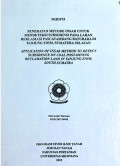
PENERAPAN METODE INSAR UNTUK MENDETEKSI SUBSIDENSI PADA LAHAN REKLAMASI PASCA…
Subsidence is one of the environmental problems that occurs slowly, especially in coal post-mining reclamation areas where the soil structure is not yet stable. As a result, the further impact of s…
- Edition
- -
- ISBN/ISSN
- -
- Collation
- xiii, 97 hlm.; ilus.; tab.; 29 cm
- Series Title
- -
- Call Number
- T1822392025
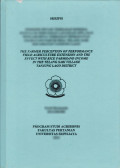
ANALISIS KANDUNGAN LOGAM BERAT TIMBAL (Pb) DI LAPIS OLAH TANAH ANDISOL TANAMA…
One of the factors of Andisol soil pollution in tea plantations is the presence of heavy metals (Pb) in the soil. Lead is one type of heavy metal that is not needed by plants because it can disrupt…
- Edition
- -
- ISBN/ISSN
- -
- Collation
- xiii, 58 hlm.; ilus.; 29 cm
- Series Title
- -
- Call Number
- T1442382024
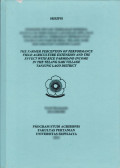
EFEKTIVITAS PENGGUNAAN SEDIMEN KPL DAN FABA SEBAGAI SUPLEMEN MEDIA PEMBIBITAN…
Settling pond sediment and FABA have considerable potential, especially in nurseries, especially in sengon buto plants, if not handled properly, it will have a negative impact on the environment. T…
- Edition
- -
- ISBN/ISSN
- -
- Collation
- xv, 56 hlm.; ilus.; tab.; 29 cm
- Series Title
- -
- Call Number
- T1442522024

PERTUMBUHAN DAN PRODUKSI KAILAN (BRASSICA OLERACEAE VAR. ALBOGLABRA) DI TANAH…
The purpose of this study was to determine the response of growth and production of kailan plants to the provision of various doses of rice husk compost tea with and without a combination of NPK re…
- Edition
- -
- ISBN/ISSN
- -
- Collation
- xvi, 125 hlm.; ilus.; tab.; 29 cm.
- Series Title
- -
- Call Number
- T1785192025

EVALUASI VISUAL DAN FUNGSIONAL SERTA PERANCANGAN ULANG ARENA FOOD COURT TAMAN…
Food court is a type of commercial public space used by the community for eating, socializing, and various activities. In its planning, attention to both visual and functional comfort is essential …
- Edition
- -
- ISBN/ISSN
- -
- Collation
- xiv, 71 hlm.; ilus.; tab.; 29 cm.
- Series Title
- -
- Call Number
- T1784922025

EVALUASI PENATAAN LANSKAP BERDASARKAN KEBUTUHAN DAN ESTETIKA SERTA PERANCANGA…
This research aims to evaluate the landscape arrangement in the parking area of G-Walk CitraLand Musi II Palembang, focusing on the analysis of parking space requirements and aesthetic aspects that…
- Edition
- -
- ISBN/ISSN
- -
- Collation
- xv, 86 hlm.; ilus.; tab.; 29 cm.
- Series Title
- -
- Call Number
- T1784982025

KAJIAN LAJU INFILTRASI DAN PERMEABILITAS TANAH PADA PERKEBUNAN KELAPA SAWIT D…
Soil infiltration rate and permeability are two important factors in determining how well the soil can absorb and drain water to support plant productivity. So it is necessary to study the infiltra…
- Edition
- -
- ISBN/ISSN
- -
- Collation
- xv, 160 hlm.; ilus.; tab.; 29 cm.
- Series Title
- -
- Call Number
- T1775762025
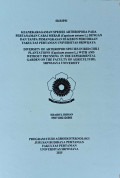
KEANEKARAGAMAN SPESIES ARTHROPODA PADA PERTANAMAN CABAI MERAH (CAPSICUM ANNUM…
Red chili plants are vegetable plants with high economic value. Maintenance of red chili plants such as pruning can affect the production and diversity of arthropods around them. This study was con…
- Edition
- -
- ISBN/ISSN
- -
- Collation
- xiii, 99 hlm.; ilus.; tab.; 29 cm.
- Series Title
- -
- Call Number
- T1782362025

RESPON PERTUMBUHAN DAN HASIL TANAMAN KEDELAI (GLYCINE MAX L. MERRILL) TERHADA…
Soybean cultivation by applying vermicompost fertilizer and reducing the use of inorganic fertilizers such as NPK 16-16-16 improved environmental quality and supported sustainable agriculture. The …
- Edition
- -
- ISBN/ISSN
- -
- Collation
- xviii, 265 hlm.; ilus.; tab.; 29 cm.
- Series Title
- -
- Call Number
- T1781212025
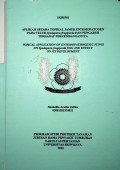
EVALUASI PERTUMBUHAN PRODUKSI SEGREGASI DAN SELEKSI GENERASI F1 HASIL PERSILA…
Popcorn is one of the popular agricultural products as a snack food. Most of the products are yellow and white corn. Not many are purple. Research this was to determine the growth, production of F1…
- Edition
- -
- ISBN/ISSN
- -
- Collation
- xv, 42 hlm.; ilus.; 29 cm
- Series Title
- -
- Call Number
- T1610382024

PENILAIAN DEGRADASI LAHAN GAMBUT DI DESA PERIGI KECAMATAN PANGKALAN LAMPAM KA…
Peatlands in Indonesia face a number of serious challenges. Land conversion activities for agriculture and plantations, as well as fires that occur especially during the dry season, have threatened…
- Edition
- -
- ISBN/ISSN
- -
- Collation
- xv, 49 hlm.; ilus.; tab.; 29 cm.
- Series Title
- -
- Call Number
- T1714502025

KANDUNGAN LOGAM KROMIUM PADA AKAR DAN TANAMAN PADI (Oryza Sativa L.) DI SAWAH…
Heavy metals chromium (Cr) is one of the environmental contaminants that has the potential to harm crops, especially rice. rice plants, Toxicity of chromium metal is determined by the strength of i…
- Edition
- -
- ISBN/ISSN
- -
- Collation
- x, 43 hlm.; ilus.; tab.; 29 cm.
- Series Title
- -
- Call Number
- T1713252025

ANALISIS HARA DAN KEBUTUHAN PUPUK N, P, K SEBELUM DAN SESUDAH PEMBERIAN AMELI…
The area of tidal swamp land in Indonesia reaches 8.92 million ha with 5.9 million ha located in Central Kalimantan. This area makes tidal swamp land a potential natural resource to be used as agri…
- Edition
- -
- ISBN/ISSN
- -
- Collation
- xv, 53 hlm.; ilus.; tab.; 29 cm.
- Series Title
- -
- Call Number
- T1713922025
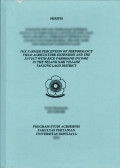
APLIKASI PGPR BAMBU DAN KOMPOS-BIOCHAR TERHADAP KETERSEDIAAN HARA N DAN P SER…
Ultisols are the dominant soil in Indonesian drylands. However, these soils generally have soil constraints such as high soil acidity, low organic matter and low N P nutrients. Efforts to improve U…
- Edition
- -
- ISBN/ISSN
- -
- Collation
- viii, 98 hlm.; ilus.; 29 cm
- Series Title
- -
- Call Number
- T1449062024
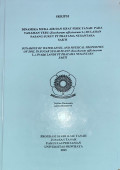
DINAMIKA MUKA AIR DAN SIFAT FISIK TANAH PADA TANAMAN TEBU (Saccharum officina…
Tidal land is land that is in a zone that is still influenced by the ebb and flow of sea water, so what must be paid attention to is the fluctuation of ground water levels in tidal swamp land. This…
- Edition
- -
- ISBN/ISSN
- -
- Collation
- xix, 91 hlm.; ilus.; tab.; 29 cm.
- Series Title
- -
- Call Number
- T1775602025
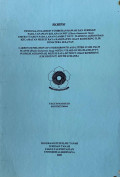
PENDUGAAN KARBON TUMBUHAN BAWAH DAN SERESAH PADA TANAMAN KELAPA SAWIT (Elaeis…
Tanaman kelapa sawit (Elaeis guineensis Jacq.) merupakan tanaman tahunan yang berpotensi dalam penyerapan emisi karbon. Perkebunan kelapa sawit umumnya banyak ditemui berbagai gulma yang tumbuh dib…
- Edition
- -
- ISBN/ISSN
- -
- Collation
- xiv, 326 hlm.; ilus.; tab.; 29 cm.
- Series Title
- -
- Call Number
- T1759242025

NILAI PENDUGAAN EROSI TANAH PADA AREAL KEBUN KELAPA SAWIT DENGAN STRATA UMUR …
Penelitian ini bertujuan untuk menduga nilai erosi tanah pada areal kebun kelapa sawit dengan strata umur dan faktor lereng berbeda di PT. Waimusi Agroindah, Kabupaten Ogan Komering Ilir, Sumatera …
- Edition
- -
- ISBN/ISSN
- -
- Collation
- ix, 987 hlm.; ilus.; tab.; 29 cm.
- Series Title
- -
- Call Number
- T1773122025
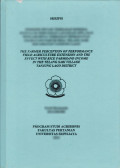
KADMIUM PADA AKAR DAN DAUN TANAMAN TEH (Camellia sinensis L.) PADA AKAR DAN D…
The content of heavy metals in soil is naturally very low, but continuous use of fertilizers can trigger an increase in heavy metal levels in the soil because the heavy metal content contained in i…
- Edition
- -
- ISBN/ISSN
- -
- Collation
- xiii, 65 hlm.; ilus.; 29 cm
- Series Title
- -
- Call Number
- T1404192024
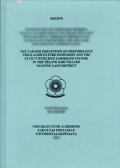
PENGARUH LINGKUNGAN MIKRO TERHADAP PERTUMBUHAN TANAMAN TREMBESI (Samanea sama…
One of the challenges in reclamation is creating an environment that supports optimal plant growth. Environmental conditions are an important factor in supporting plant growth and development. Micr…
- Edition
- -
- ISBN/ISSN
- -
- Collation
- x, 85 hlm.; ilus.; 29 cm
- Series Title
- -
- Call Number
- T1403542024
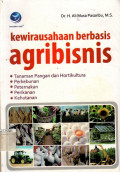
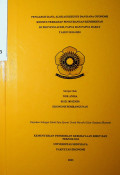
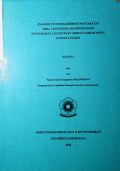
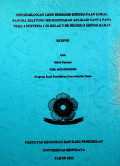
 Computer Science, Information & General Works
Computer Science, Information & General Works  Philosophy & Psychology
Philosophy & Psychology  Religion
Religion  Social Sciences
Social Sciences  Language
Language  Pure Science
Pure Science  Applied Sciences
Applied Sciences  Art & Recreation
Art & Recreation  Literature
Literature  History & Geography
History & Geography